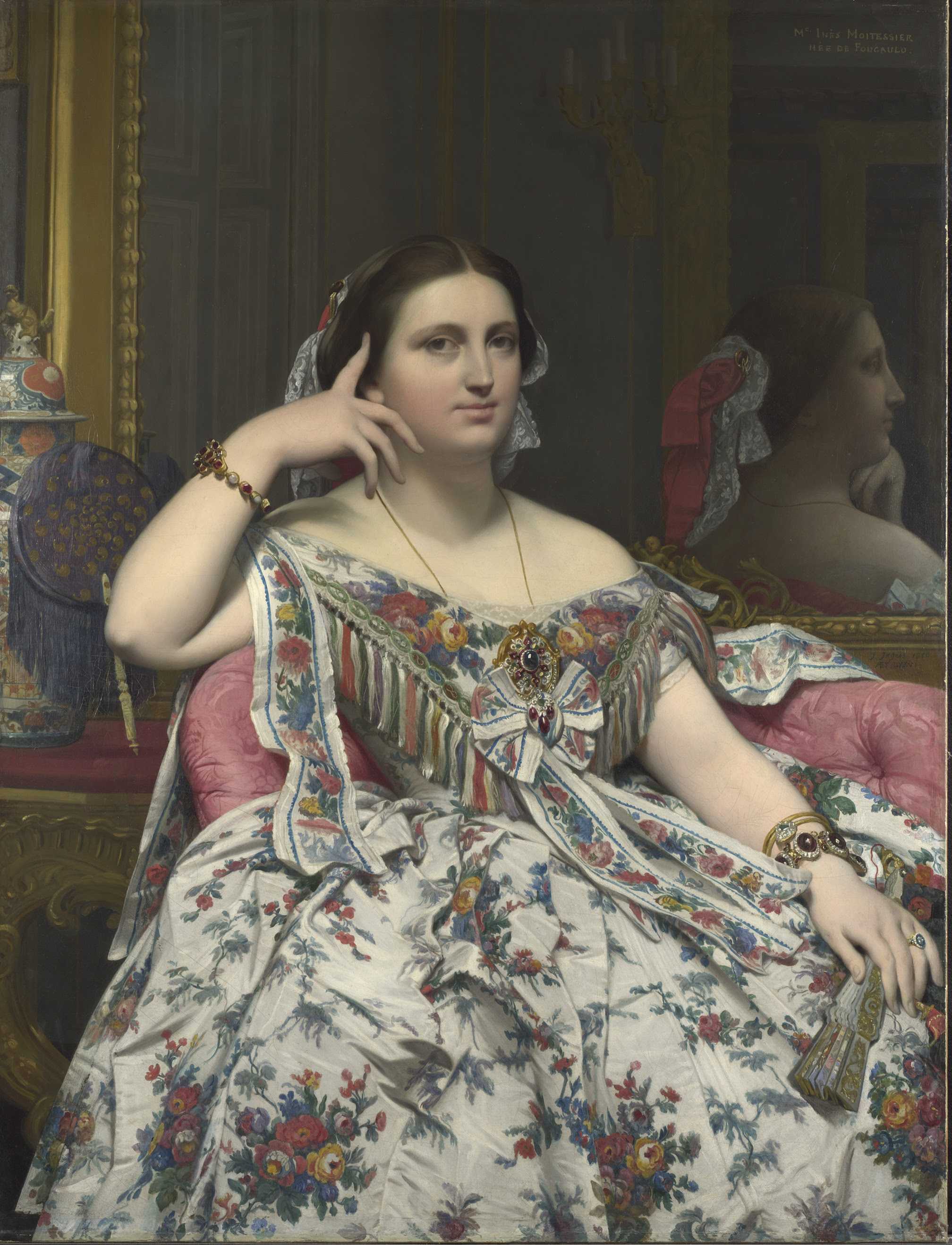For the first time ever, a painting by Pablo Picasso, and the painting by Jean-Auguste-Dominique Ingres which famously inspired it, will be shown side by side at the National Gallery, London as part of a special collaboration between the two institutions.
Picasso admired Ingres and referred to him throughout his career. Picasso’s affinity with Ingres can clearly be demonstrated not only in painting but also extensively in his drawings and studies during his neoclassical phase in the 1920’s. In 1921 Picasso was working in Paris and in the process of reinventing his art after Cubism. He had encountered Ingres’s Madame Moitessier in an exhibition that year and was so enthralled by this portrait that it still greatly influenced him 11 years later in 1932, when he painted Woman with a Book. The latter is one of his most celebrated likenesses of his young mistress Marie-Thérèse Walter (1909 – 1977), whom he had met in 1927 - while still married to his wife the Russian ballerina Olga Khokhlova (1891 – 1955); they never divorced; she died decades later, still Mme Picasso. Woman with a Book balances sensuality and restraint, and echoes Madame Moitessier in significant ways: his model’s hand touching the temple is a direct quotation, while the flowers on her sleeves evoke Madame Moitessier’s dress. By replacing Madame Moitessier’s fan with the fluttering pages of a book, Picasso tapped into the eroticism latent beneath Ingres’s image of bourgeois respectability. The serene profile reflected in a mirror to the right in Picasso’s portrait likewise references its Neoclassical precedent but may also constitute an abstract self portrait.
Wearing her finest clothes and jewellery, Madame Moitessier (1821–1897) gazes majestically at us. She is the embodiment of luxury and style during the Second Empire, which saw the restoration of the French imperial throne and the extravagant display of wealth. The room has the ambiance of a luxurious 18th-century salon with its Japanese Imari vase, silk handscreen, ornate fan, Louis XV console table, gilded mirror frame and padded damask sofa (with a tiny cupid peeking over Madame Moitessier’s left shoulder). Her distinctive pose is based upon a fresco of Hercules and Telephus from Herculaneum depicting the goddess of Arcadia, that Ingres may have seen in Naples in 1814. In the portrait, he uses the gesture of Arcadia’s right hand, with its index finger raised, supporting her head. Ingres owned engravings of the mural and preparatory drawings show how he gave great attention to the precise positioning of Madame Moitessier’s right arm, hand and fingers. Indeed, for Ingres, Madame Moitessier was a living embodiment of the Classical ideal. A modern-day goddess enthroned in luxury, she sits impassively, fully confident of her place in society.
The portrait was commissioned in 1844 to celebrate the marriage two years earlier of Marie Clotilde-Inès de Foucauld to the wealthy merchant, Sigisbert Moitessier. Ingres was initially reluctant to accept the commission but changed his mind after meeting the 23-year-old Madame Moitessier, whom he described as ‘beautiful and good’. Art critic Théophile Gautier, who watched during some of the painting sessions, agreed with Ingres, describing her beauty as the most regal, magnificent, stately and Junoesque that he had ever seen drawn.
It took Ingres 12 years to complete the painting. During this time, the picture underwent several major revisions: a young daughter, Catherine, was originally to be included but was removed from the composition, and at the last moment, in 1855, a different dress was chosen to reflect the change in fashion. The yellow dress Madame Moitessier was initially wearing was changed to a dress of fashionable and expensive Lyon silk printed with a floral pattern, which is echoed by the flowers and leaves of the extravagant gilt frame, designed by Ingres himself.
Her reflection in the mirror was a startling invention to show a different side of her, but closer inspection of the mirror reveals some oddities. The reflection is not entirely consistent with her actual position. It also lacks the detail and luminosity of the figure, its dull surface contrasting with the opulence of Madame Moitessier and her surroundings. This complex and ambiguous invention suggesting simultaneous points of view would have an impact in the 20th century, and not only on Picasso.
This exhibition is an opportunity to explore Picasso’s enduring affinity with Ingres, and his ability to reference or ‘steal’ previous artist’s work which he famously acknowledged when he said: ‘Lesser artists borrow; great artists steal.’ It will provide visitors with a unique opportunity to compare the two works and to engage with these masterpieces in a different way.
- Monday:
-
10:00 - 18:00
- Tuesday:
-
10:00 - 18:00
- Wednesday:
-
10:00 - 18:00
- Thursday:
-
10:00 - 18:00
- Friday:
-
10:00 - 21:00
- Saturday:
-
10:00 - 18:00
- Sunday:
-
10:00 - 18:00


